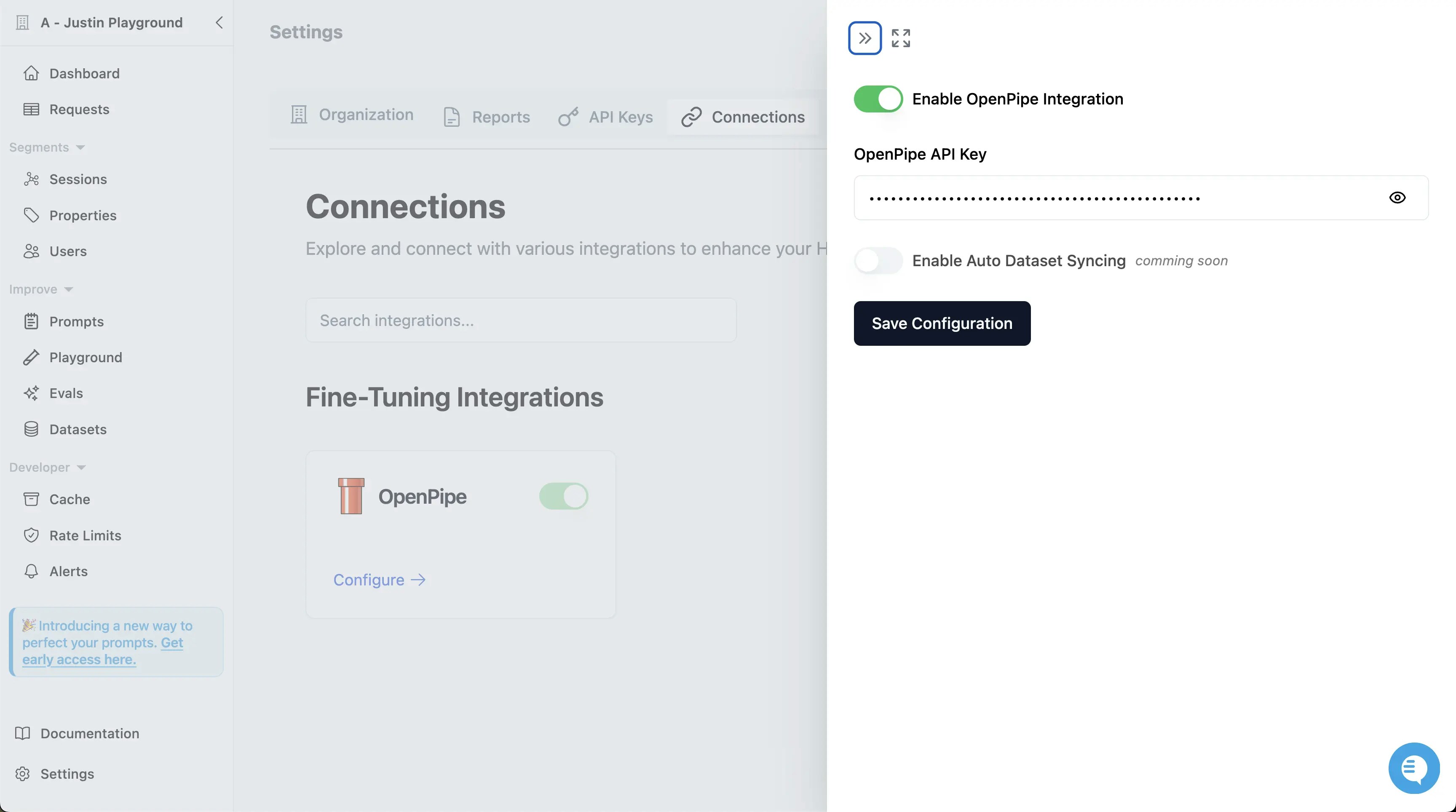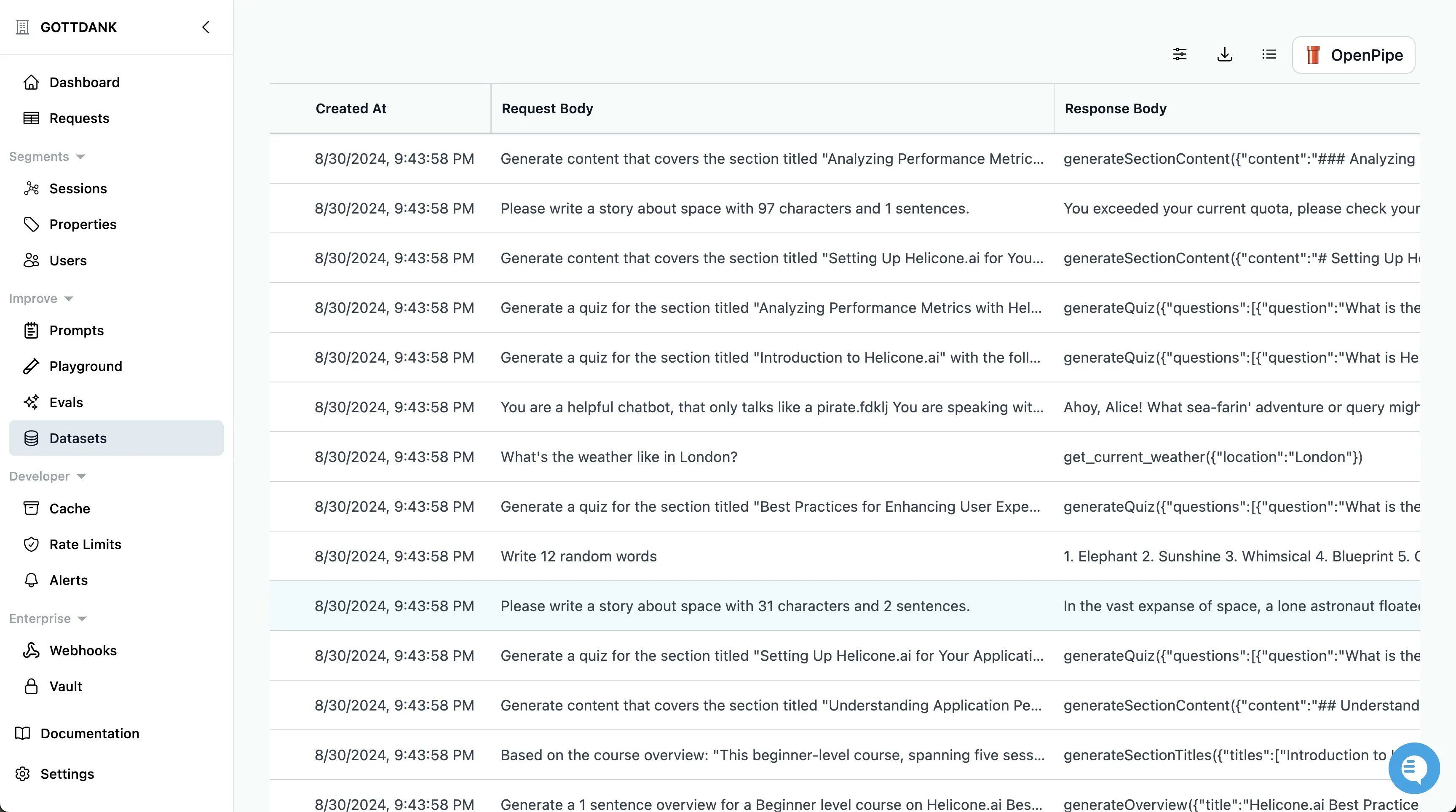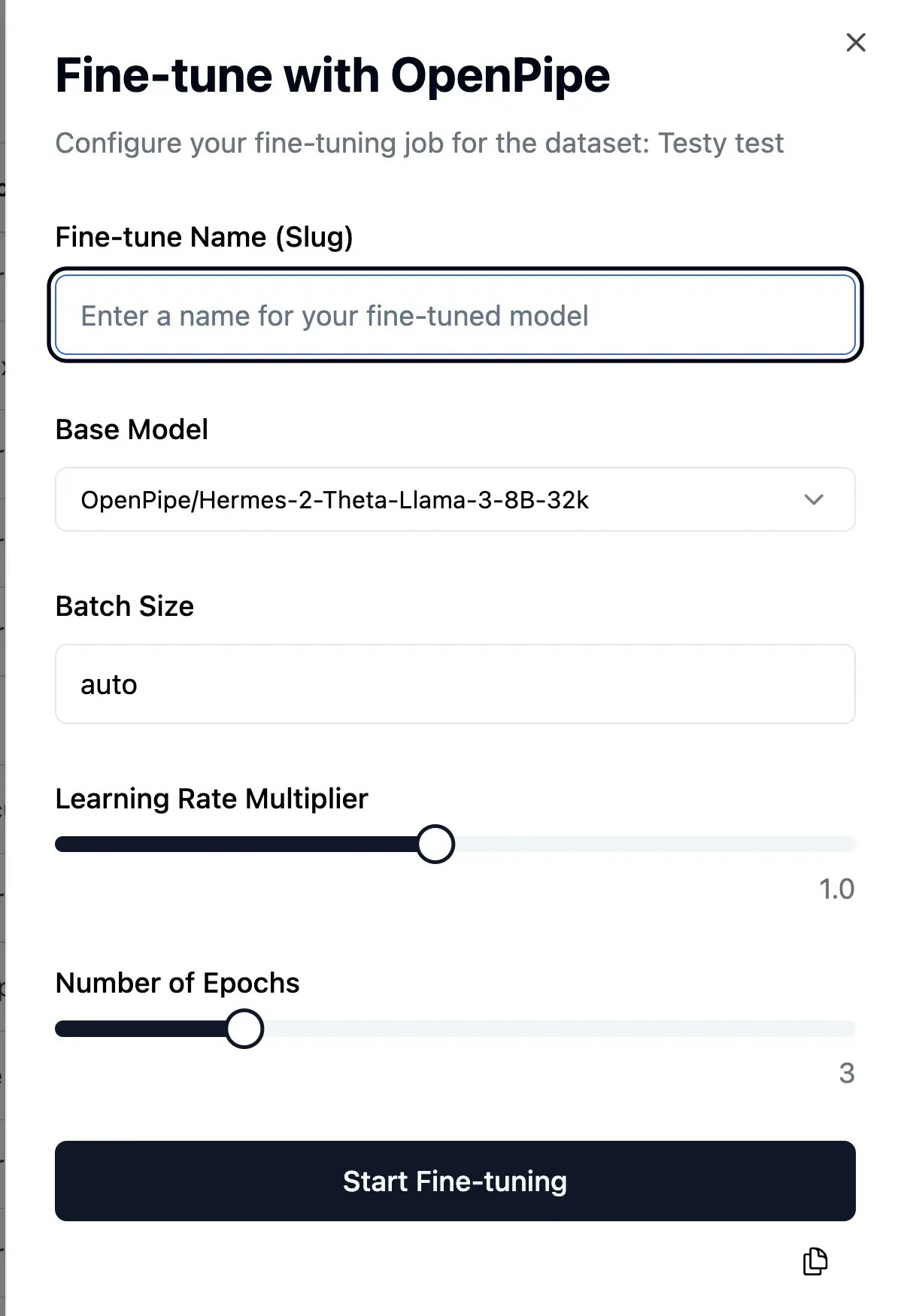1
Add the OpenPipe Integration
Navigate to 
Settings -> Connections in your Helicone dashboard and configure the OpenPipe integration.
2
Create a Dataset for Fine-Tuning
Your dataset doesn’t need to be enormous to be effective. In fact, smaller, high-quality datasets often yield better results.
- Recommendation: Start with 50-200 examples that are representative of the tasks you want the model to perform.

3
Evaluate and Refine Your Dataset
Within Helicone, you can evaluate your dataset to identify any issues or areas for improvement.
- Review Samples: Check for consistency and clarity in your examples.
- Modify as Needed: Make adjustments to ensure the dataset aligns closely with your desired outcomes.

4
Configure Your Fine-Tuning Job
Set up your fine-tuning job by specifying parameters such as:
- Model Selection: Choose the base model you wish to fine-tune.
- Training Settings: Adjust hyperparameters like learning rate, epochs, and batch size.
- Validation Metrics: Define how you’ll measure the model’s performance during training.

5
Deploy and Monitor Your Fine-Tuned Model
Once fine-tuning is complete:
- Deployment: Integrate the fine-tuned model into your application via Helicone’s API endpoints.
- Monitoring: Use Helicone’s observability tools to track performance, usage, and any anomalies.